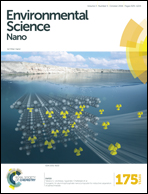Research highlights: unveiling the mechanisms underlying nanoparticle-induced ROS generation and oxidative stress
Abstract
The field of nanotoxicology has a long-tested hypothesis, supported by a significant body of evidence, that nanoparticle-induced reactive oxygen species (ROS) lead to oxidative stress in biological systems. Within this paradigm, it is critical to fundamentally understand the underpinning mechanisms of nanoparticle ROS production and the corresponding oxidative stress they induce. This Highlight is focused on four recent articles on this topic. The first highlighted work investigated ROS generation from various silica nanoparticle surfaces and demonstrated that porosity and surface functionalization are key factors influencing ROS generation and nanoparticle toxicity. The second article demonstrated plasmon-mediated ROS production via hot electron production on gold nanocage surfaces under near-infrared irradiation. The third highlighted work correlated electronic properties of metal oxide nanoparticles to ROS generation, and built a quantitative linear relationship between ROS generation and antibacterial activity. Finally, the fourth study provided insights regarding protein signatures and pathways sensitive to oxidative stress in macrophage cells using a redox proteomic approach. Together, these four reports reveal mechanisms underlying nanoparticle-induced ROS generation and the resulting cellular oxidative stress.


 Please wait while we load your content...
Please wait while we load your content...